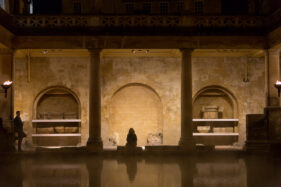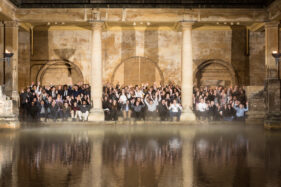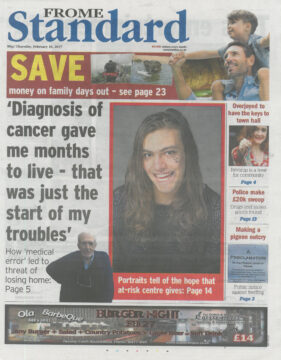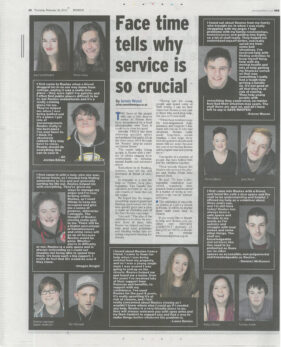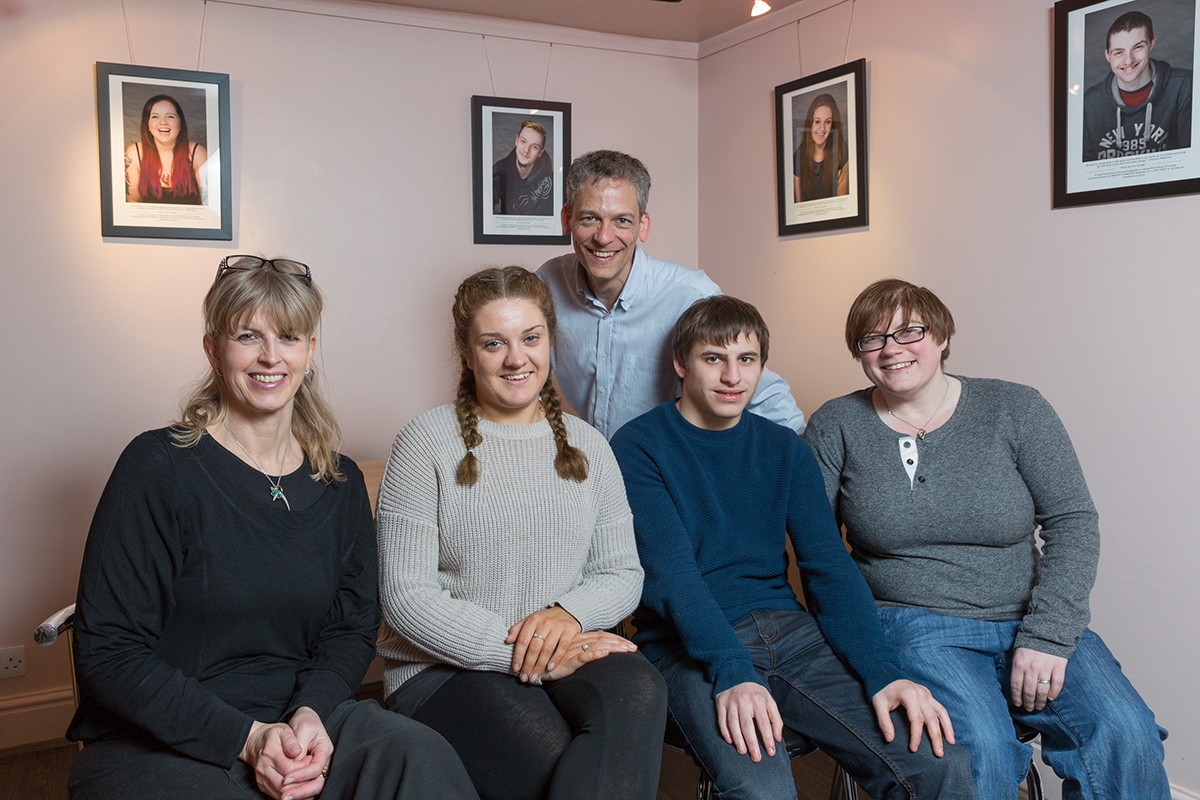I like to end the day with a little light reading (currently John le Carré’s The Pigeon Tunnel), but much of my work involves reading the light. Painful punning aside, what I mean is when I’m out taking pictures I’m studying the light; the quality, the quantity, the colour and so on.
Typically I’ll be in an office getting ready to take photos for my client and what I’ll be considering is the light source (window, overhead strips, or a mixture of the two), how much of it there is and what its qualities are.
Most office lighting is great as far as the client is concerned. To the human eye it will appear bright and white, but the human eye and brain are incredible feats of biological engineering and capable of filtering out all kinds of crazy colours and of seeing details which a camera simply can’t.
These two shots demonstrate a rather extreme, if non-typical, example of what I mean.
I was asked to take photos of a group of scholars for University of Bath at an event hosted at The Roman Baths in Bath (let’s see how many times I can work the word Bath into this blog post shall we?)
One of the shots required was a mass group of all the scholars, not too formal, but arranged along one end of the Great Bath. This was an evening job and being early February there was no daylight left. In fact the only available light was from spot lights pointing at the back wall, and a couple of gas torches either side of the pool.
Given this situation, I knew just from looking at it that whatever I did with the camera settings I wouldn’t get a usable image without the addition of flash. Since camera-top flash (which I hate anyway) wouldn’t be attractive and would probably just illuminate the steam from the water, I set up a pair of flashes on stands at the far end of the bath from me, one each side of the bath pointing towards the students.
The test shot (left) shows what the camera sees without the addition of flash. Obviously the students weren’t there for the test shots as I wanted to make sure they weren’t hanging around while I got the settings right, but my stand-ins Rachel and Chris did a fine job.
So if I’m coming to your office to shoot a series of “simple” pictures, don’t be surprised if I bring quite a lot of lighting kit even if the light looks fine to you. It’s rare that the available light on a location is already attractive enough to render the best photos, but if I can illuminate 100 students across a steamy pool of water on a chilly night, I can probably make something visually appealing in your office space.

